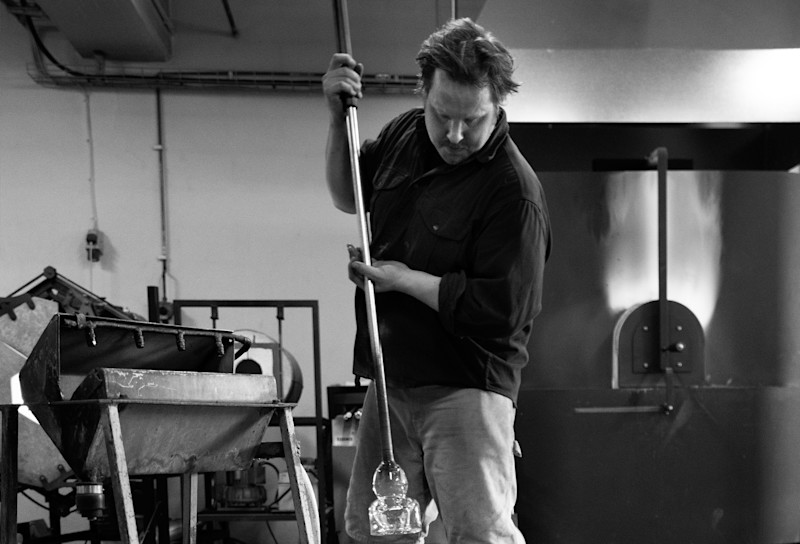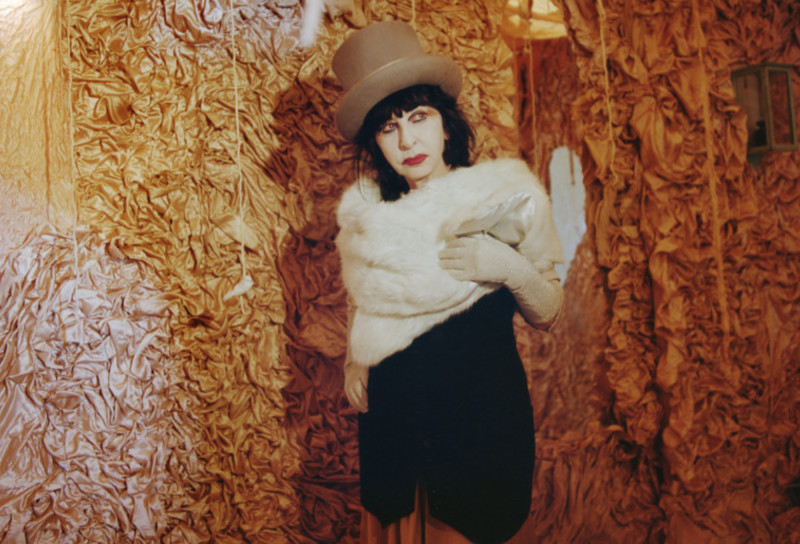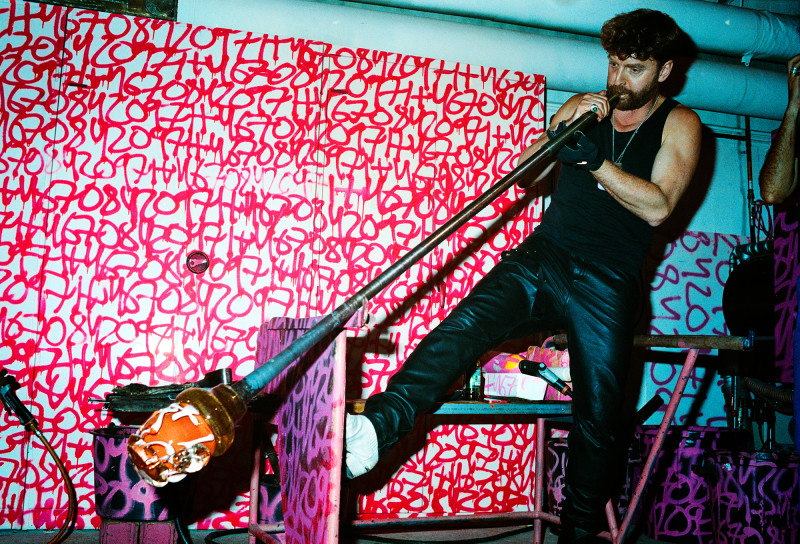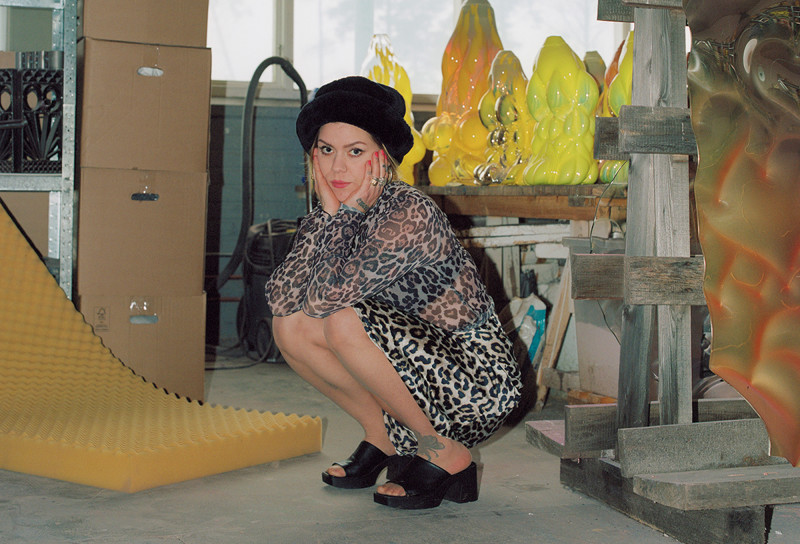Jeremy Lawson
Interview
August 17, 2023
Welcome back to CFHILL! What have you been up to in the past year?
— I’m so happy to be back! Our previous exhibition was a real catalyst for my work. Michael Elmenbeck was the first person to seriously appraise my painting when I was still in grad school and since then I haven’t stopped for a moment. I worked with Harper’s Gallery earlier in the year building the beginning of this body of work for an exhibition in Los Angeles that then expanded towards its resolution here almost exactly a year after our first meeting. It has a lovely full circle quality.
How long have you been working on the artworks for the show?
— I work on a dozen or more works simultaneously, some proceeding more quickly than others in a very organic way which generally takes months, sometimes a year or more. These works were mostly made in the last 10 months or so.
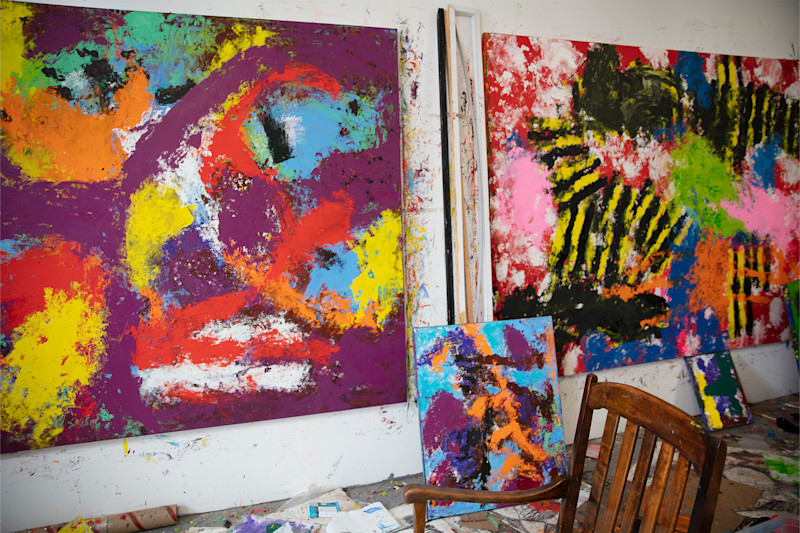
How did you transition from a conceptual practice to painting?
— I came to painting kind of in a reverse historical dialectic. Growing up in an isolated rural town at the ‘end of history’ era of the early 1990s, we inherited postmodernism and deconstruction (although we didn’t know what that meant) and irony and punk rock etcetera, so art only made sense through video and photo, fast and cheap mediums that were like a running commentary on history and culture. I always made paintings, but I made them for myself while I grew a more public practice of experimentation in every genre I was exposed to. I found art late and it overwhelmed me, from Duchamp and Broodthaers to Nauman to Neo-Expressionism to early 1990s sculptural poetry of Félix González-Torres and Roni Horn et al.
I’d pursue a project until I found what I thought I was looking for and would quickly move on. But a few years ago, it became obvious to me that painting, and abstraction particularly was too difficult to toy with without full commitment, so I did. I haven’t found any easy answers and don’t expect to. Every mark causes another rupture.
It’s consuming.

Where does the exhibition title – Sought Cause – come from?
— I made it up, but I think it’s a response to the feeling I spoke to above, that of ‘finding answers’, or people refer to ‘problems’ in painting to ‘solve’. This is all true, abstraction is an endless puzzle, but the more intuitive I learn to be, it seems that there’s something inherent, or underneath the nature of composition. You balance the assertion of your will with a sensitivity to what is being revealed. I’m neither the author nor the subject at any one time, but something in between. This turn of phrase felt like it embodied that. Like a chicken or the egg scenario.
Your works have a very bold palette, how do you work with color?
— The color is intuitive but grew out of a preoccupation with the last shows of several artists: Howard Hodgkin, Picasso, Monet. Their last works had an ecstatic quality I found moving as a place to begin. Like the light was going on at the end of their lives. From there it’s expanded but retained a lot of that heat up to this point.
Your method of painting is very physical, and your works have a strong textural quality. How do you achieve this?
— It’s all oil and I only use my hands and paper pallets to paint. After an initial automatic drawing made with hands dipped in a few colors, I apply the paint either print-like, by filling a rectangle with a certain color or pattern – like stripes or circles and spotting or smearing it, like a very basic monoprint just taken to absurd lengths – or I apply with my hands. Every move is super deliberate but simultaneously very difficult to control so I’m almost always responding to failure. They often end up almost topographic
simply due to the length of the labor.
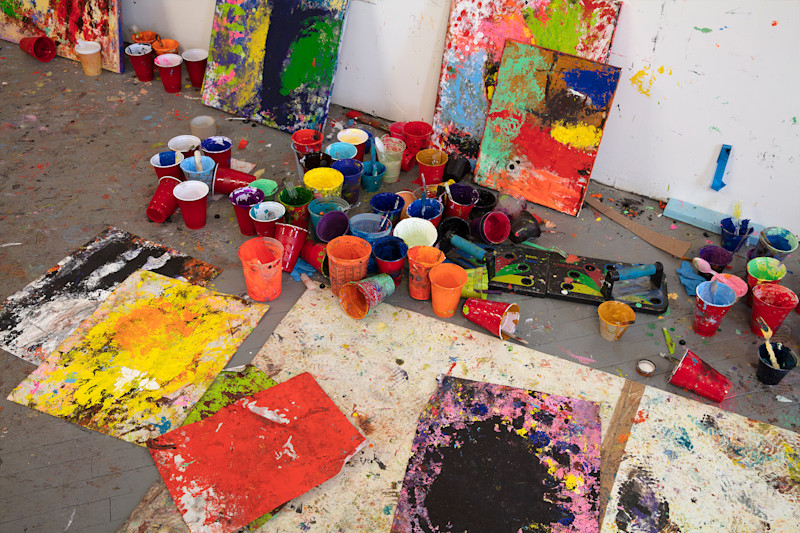
How do you balance spontaneity and patience when completing a work?
— There’s a very direct relationship between the length of looking and the suddenness of the mark. Most of the time is spent staring, trying to relax into the space that’s coming into being and feeling what it wants. When I see something, I just do it very quickly then live with the result for days before they either stay or are destroyed. Sometimes I do see something immediately upon coming into the studio and rush to do it before I lose my nerve, but more often I’m staring, pacing around, trying to convince myself of my own taste. In the end they hopefully appear quite spontaneous, but it’s kind of agonizing. It’s like jumping off a high dive over and over. I love the risk, but I still get nervous.

What is the difference between working on large and smaller scales for you?
— There’s really no difference in scale as far as difficulty, just in different ways. I think small work is very challenging but because
I use these pallets that are sort of the same size as the smallest works in the show, they can be a little more direct, like one mark on the pallet can fill the whole canvas. Large works obviously entail more of the body and have less control. But I want them to all have the same energy and that is difficult. Large to small, all the same strength. It’s a big challenge.
